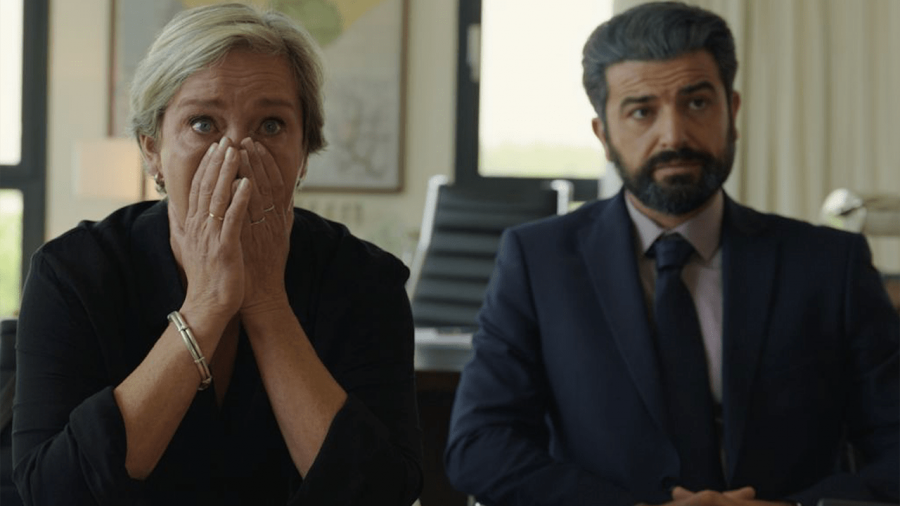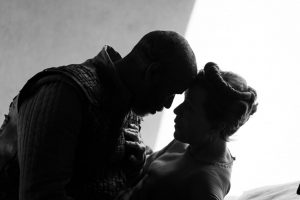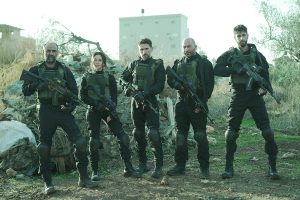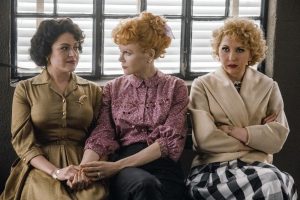Searching for context after binging Israeli-Norwegian hostage drama ‘The Girl From Oslo’
Published January 2, 2022
“The Girl from Oslo” — a holiday gift from my Netflix algorithm, undoubtedly prompted by my consumption of nearly every Israeli series that the streamer has to offer — sidled into my feed last week and became my last series binge of 2021.
The ten-episode story centers on three young tourists abducted from their vacation in the Sinai desert in Egypt by the Islamic State (formerly ISIS) and the negotiations that follow between Israel, Norway and the terrorists. I hadn’t been craving another terror-in-Israel story (because who ever is?), but this Israeli and Norwegian co-production, from Kyrre Holm Johannessen and Ronit Weiss-Berkowitz, seemed different. (This review contains some spoilers.)
The series’ Norwegian title, “Bortført,” means “the abducted.” In Hebrew, this would have been “Hatufim,” which is already the name of an Israeli series distributed in English as “Prisoners of War.”
Two of the kidnapped teens are Israeli siblings; the third is Pia, the “girl” from Oslo who had run away to Israel after a fight with her mother. Following her daughter’s trail to Israel, Alex begs her old friend Arik to get involved; they met during the Oslo Accord talks in 1993 and he is now in a high-level government position. When Arik’s efforts don’t yield the results Alex wants, she goes rogue, asking her Palestinian friend Layla, whom she also met during the apparently incredibly social negotiations leading to the first Oslo Accord, to ask Hamas for help. But Layla, a doctor who lives in Gaza, is quietly working her own angle with Hamas, trying to save her son from extremism.
The women in the cast give standout performances: Anneke von der Lippe (Alex) as a tortured mother confronted by her past secrets; Andrea Berntzen (Pia) and Shira Yosef (Noa) as terrified, desperate hostages; and Raida Adon (Layla) exuding a weathered exhaustion of maternal concern, marital loss and daily life in Gaza.
As Arik, Amos Tamam (of “Juda” and “Srugim”) rocks sculpted hair and a beard that’s almost distractingly threaded with gray and gives a very internal performance, through cautious breathing and constant furrowing of his brow (and pretty much every wrinkle on his face). Even when things are collapsing, Arik seems unflappable and maintains a posture of political stability.
The connection to the Oslo conference — at which Palestininan officials met with Israelis for backchannel peace talks — mostly seems like an answer to an improv prompt, “Name a place where people from three different nations might meet.”
While the political experiences of Oslo don’t enter the action often, there is an undercurrent of irreconcilable, dissenting approaches and shifting social and geopolitical alliances. Loyalties are flexible, cooperation splinters, extremism becomes a chosen tactic.
The plans for the hostages’ release are sometimes confusing to follow. The prisoners are dragged across deserts and brutalized, again and again, ending up in Gaza. (A subplot about terrorists blackmailing Alex’s husband to work on freeing an imprisoned terrorist seems almost too tangential.)
There are subtle digs at former Israeli Prime Minister Benjamin Netanyahu and government corruption, echoes of Israelis’ past efforts to free hostages, and the constant question: How far would each of us go to save someone we love?
After finishing this tense series, I ached for additional historical context.
I remember Yasser Arafat, Bill Clinton and Yitzhak Rabin on the White House lawn in 1993, and the hesitation of the Arafat-Rabin handshake. But I didn’t really know the history. Thankfully, two films helped fill in the blanks: the 2021 HBO drama “Oslo” (about Norway’s husband-and-wife team that brought the two sides together in the early 1990s) and the 2018 documentary “The Oslo Diaries” (featuring interviews with the surviving members of the team and the politicians who were involved, including Shimon Peres in his last interview before his death in 2016).
After 10 episodes of “The Girl From Oslo” (each about 35 minutes), 118 minutes of “Oslo” and then 97 minutes of “The Oslo Diaries,” I started thinking about the English title of the series. They could have called it “The Norwegian Girl” or “The Girl from Norway.” But Oslo is important, not just as the place where Pia is from, but because the trio negotiating her release — her mother, Arik and Layla — met in the context of the Oslo peace talks. Moreover, Pia is herself a byproduct of the Oslo experience, an attempt to knit together opposing forces for the sake of peace. (That might be considered a spoiler, but it’s one that becomes evident early, even before it is stated outright.)
For the visionaries who imagined it, feeling that potential for peace must have been exhilarating. How heartbreaking to watch that opportunity dissolve. How does one emerge from that place of peace and optimism? Despondent about the future, or with the conviction that if talks happened once, they can happen again?
While these three Oslo-themed works don’t convey optimism about the future of the peace process as long as it remains a conflict of nations, they may indicate that the path forward is through person-to-person dialogue and acknowledging individual humanity.
In starting a new year that is plagued by dissent in the Middle East and in various other polarized spaces — whether online or on the streets of our cities — perhaps that’s the real takeaway: The key is people over politics, personal relationships forged over food and conversation in a room apart from the media, to determine points of commonality and compromise.



















